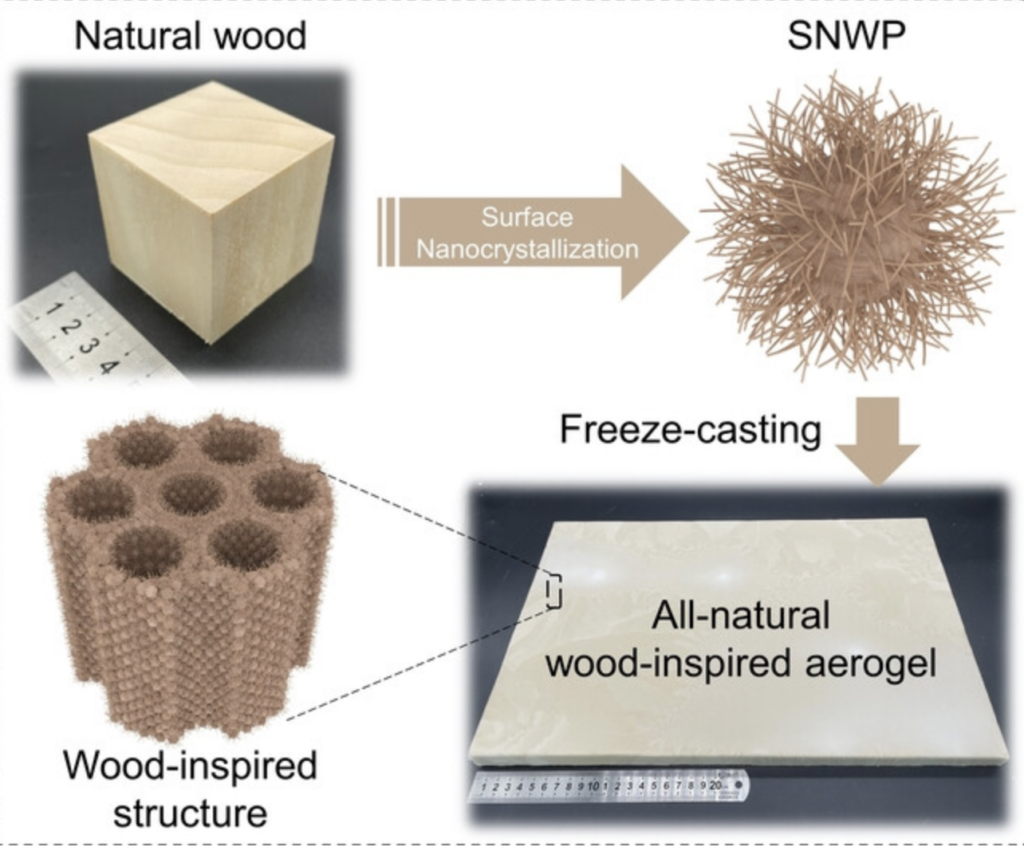https://onlinelibrary.wiley.com/doi/10.1002/anie.202211099
Wood has been used for thousands of years as a versatile material and abundant resource with properties such as low density, low thermal conductivity, good mechanical properties and sustainability. In recent years, based on the understanding of wood structure, various wood-like materials with unique physical properties and wide applications have been developed, among which aerogel with excellent thermal insulation properties is one of the important research topics. Wood-like aerogels based on plastics and resins are limited by poor biodegradability, leading to the accumulation of waste and posing environmental problems. In contrast, wood-like aerogels based on existing nanostructured substrates are limited by their insufficient sustainability and high cost. Therefore, to solve the problem of unsustainability of current materials, the development of low-cost, low-energy, and environmentally friendly novel building blocks will play an important role in the development of wood-like aerogels.
Recently, the team of Yu Shuhong, a member of the Chinese Academy of Sciences and professor at the University of Science and Technology of China, reported the preparation of pure natural wood-like aerogel with excellent thermal and fire resistance properties using a bottom-up strategy with natural biomass and natural minerals as raw materials. The related research results were published in the German Journal of Applied Chemistry under the title An all-natural wood-inspired aerogel. Using an ingenious surface chemical modulation method, the researchers achieved the activation of micron-scale wood particle surfaces under mild conditions, thereby exposing cellulose nanofibers. The nanofibers on the surface of these particles significantly enhanced the interactions between the particles and combined with unidirectional freezing technology to construct a strong and durable wood-like aerogel. This aerogel has an oriented channel structure similar to that of natural wood , while this wood-like structure can reduce the thermal conductivity of the aerogel, giving it an ultra-low radial thermal conductivity of 17.4 mW m-1K-1, which is superior to existing cellulose-based aerogel materials and various commercial sponges. In addition, the addition of natural clay nanosheets led to a significant improvement in the fire resistance of this aerogel, which could withstand a flame at 1300 °C for at least 20 min without burning through.
This all-natural wood-like aerogel outperforms both natural balsa wood and most commercial sponges in terms of thermal and fire performance, and is expected to be an ideal replacement for existing commercial insulation materials. In addition, the natural raw material source and low-energy and low-emission preparation process of the all-natural wood-like aerogel make it good biodegradability and sustainability, which can reduce the negative impact of the insulation material on the environment during production, use and disposal.


